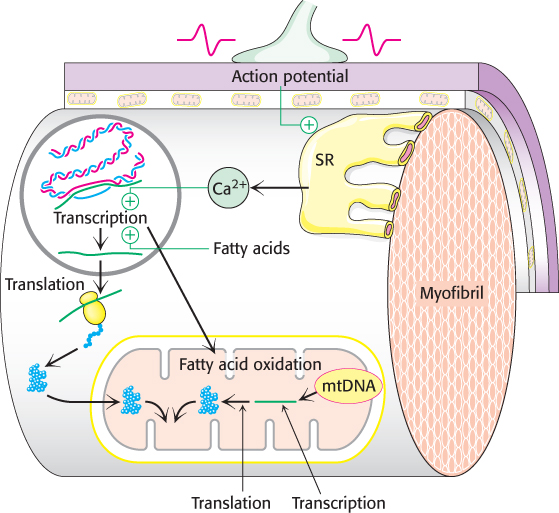
Exercise results in mitochondrial biogenesis and enhanced fat metabolism. An action potential causes Ca2+ release from the sarcoplasmic reticulum (SR), the muscle-
[Information from D. A. Hood, J Appl. Physiol. 90:1137–